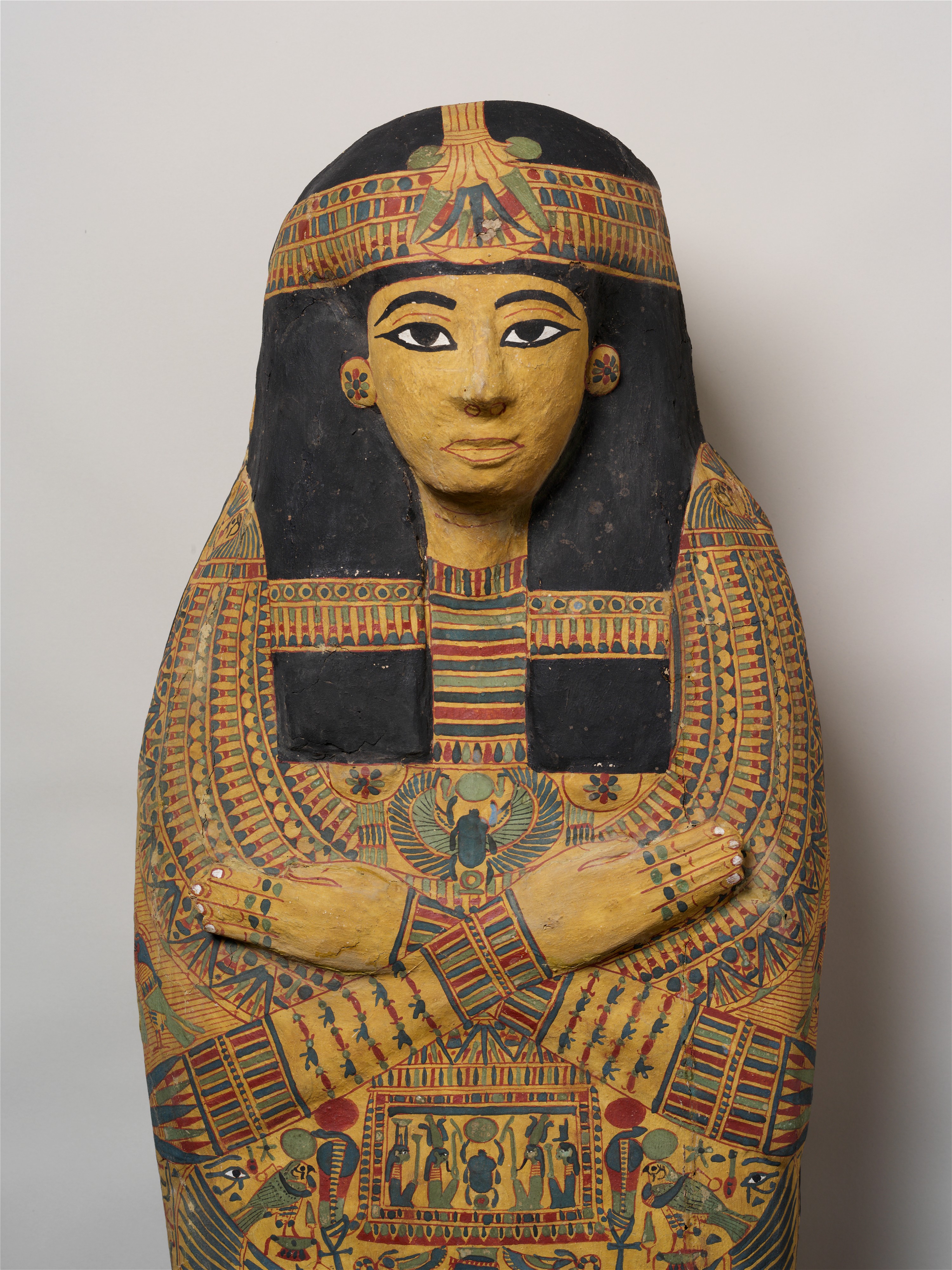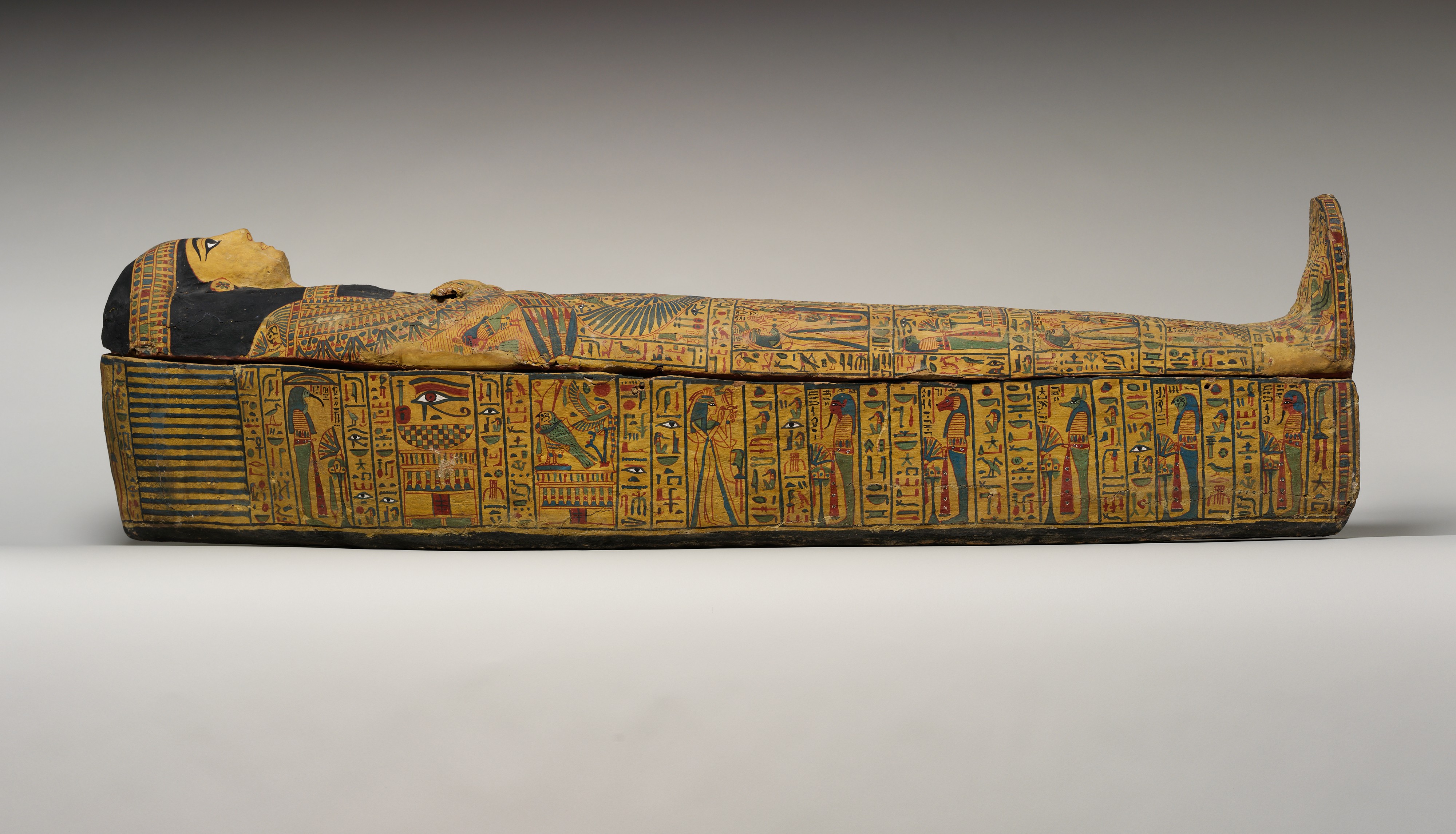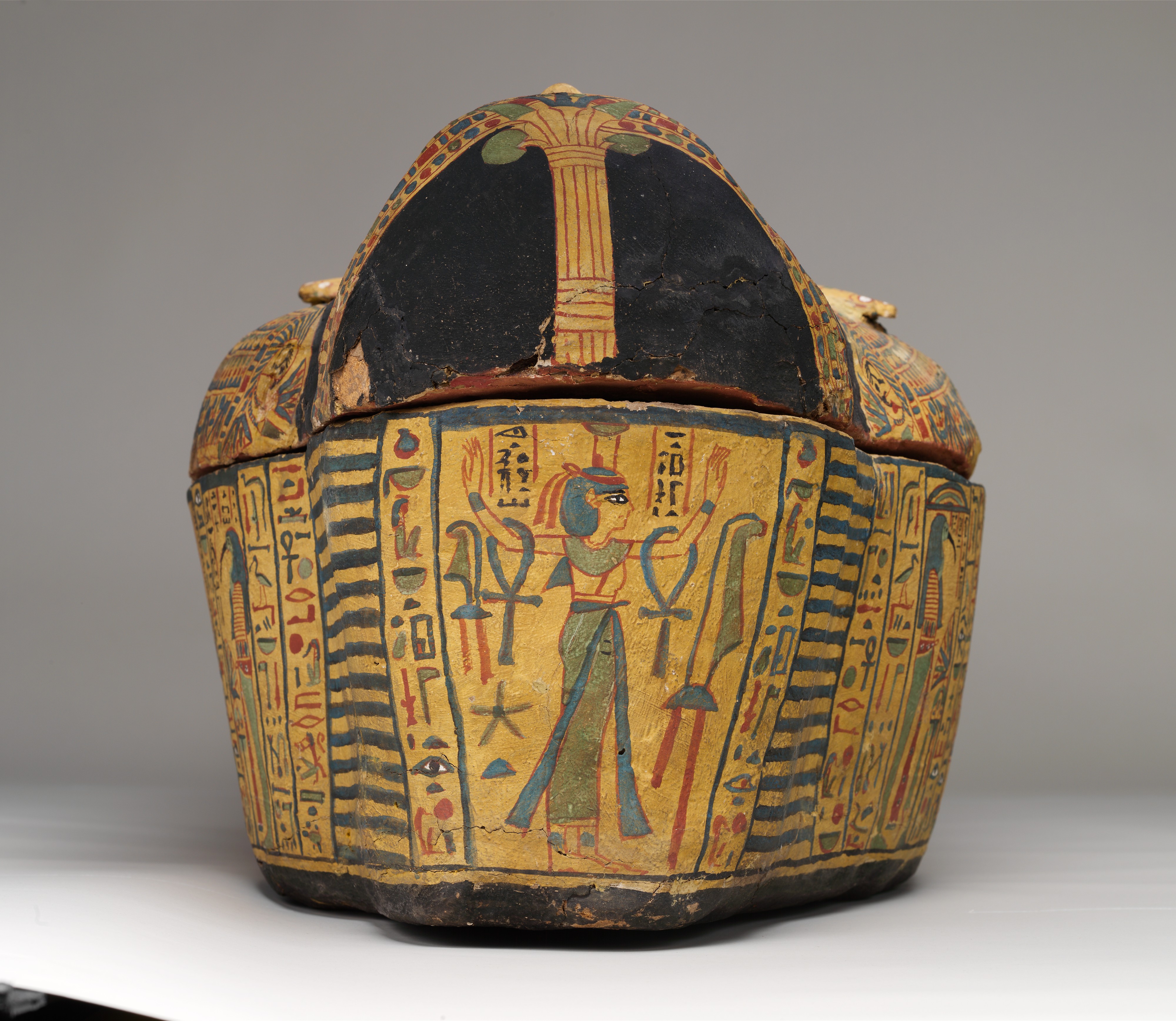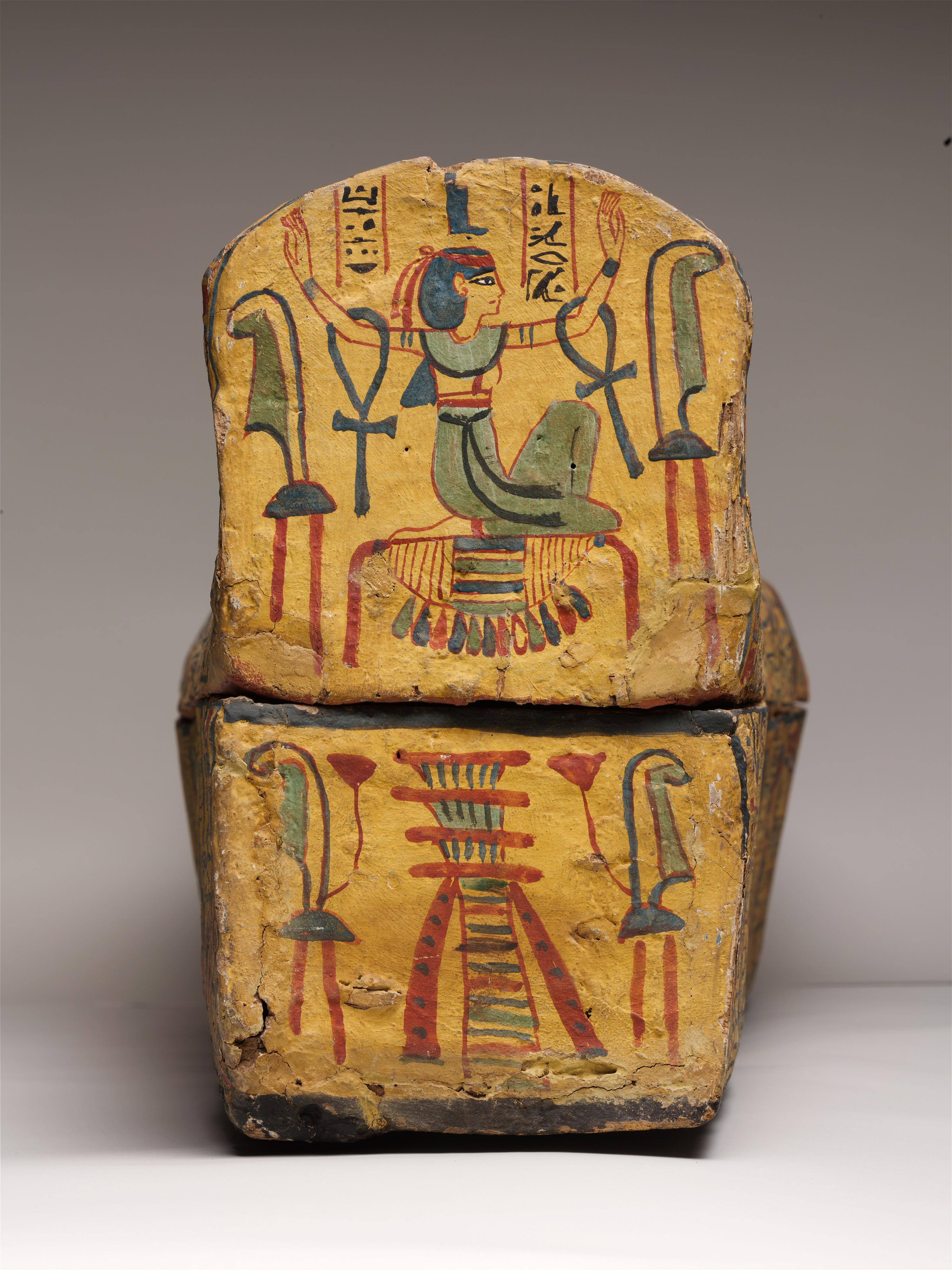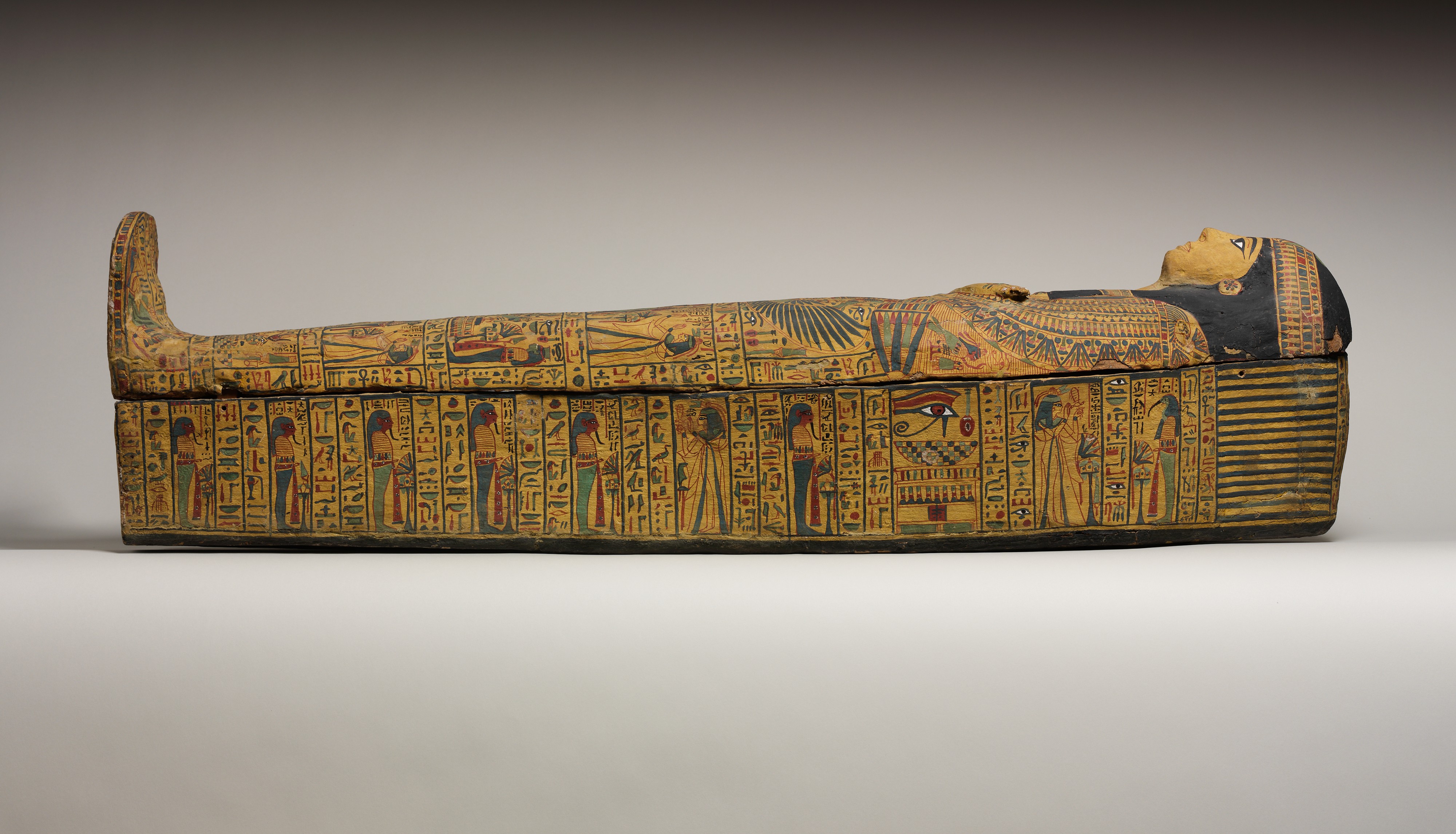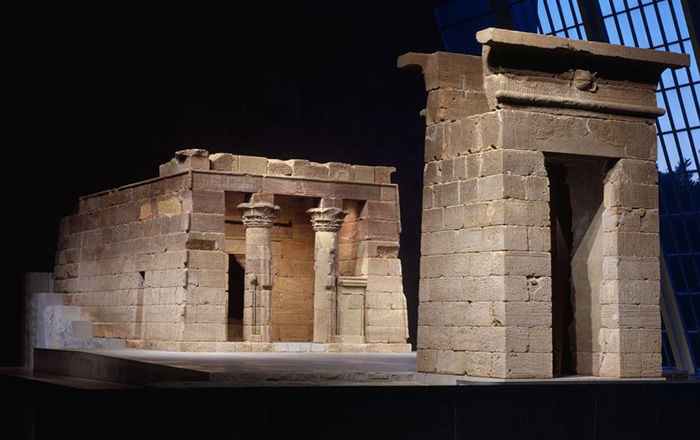Coffin of the Chantress of Amun Ansenmes
New Kingdom–Third Intermediate Period
The coffin of the Lady of the House and Chantress of Amun, Ansenmes, was found in the back corner of a roughly cut chamber at the bottom of a 4.8-meter-deep shaft. Although the size of the coffin and Ansenmes’s titles indicate it was made for an adult, the body inside was that of a young girl, far too small for the container. She had been carefully mummified, with double cords tied around her throat, elbows, wrists, and ankles—each knotted in multiples of seven. These may have been intended to provide her with magical protection.
The exterior of the coffin, which represents the deceased in the form of a sah (a properly embalmed body), is decorated with images of Ansenmes and various gods. Beneath a figure of the sky goddess Nut, her wings outstretched to protect the mummy, Ansenmes is shown worshipping the god Osiris as a mummy, with his sister-wife Isis on the left and their sister Nephthys on the right. The next row of vignettes depicts the falcon god Sokar, protected by the cobra goddess Wadjet. Below these, in pairs on each side of the central inscription, are the mummiform “canopic” deities who embodied and protected the viscera. Next, the goddess Neit, in the form of a cow, rests on a decorated basket. On the feet of the coffin—positioned to be seen by Ansenmes—are once again Isis and Nephthys. These goddesses, central to protecting the deceased, appear yet again on the head (Nephthys) and foot (Isis) of the coffin.
On the sides of the coffin, Ansenmes is again depicted adoring the canopic genii, while the ibis-headed Thoth “opens the sky” so that she may emerge as a blessed spirit. In columns and bands of inscription—echoing the outer bands once used to wrap the mummy—are spells spoken by the gods for the benefit of the deceased.
During the 21st Dynasty, many earlier coffins were reworked and reused, in some cases by descendants of the original owners. The style of decoration, along with the fact that Ansenmes’s coffin is unvarnished, likely identifies it as one of the few surviving coffins from the late 20th or early 21st Dynasties. The mismatch between the coffin and the body suggests it was reused without being reworked.
This image cannot be enlarged, viewed at full screen, or downloaded.
This artwork is meant to be viewed from right to left. Scroll left to view more.


